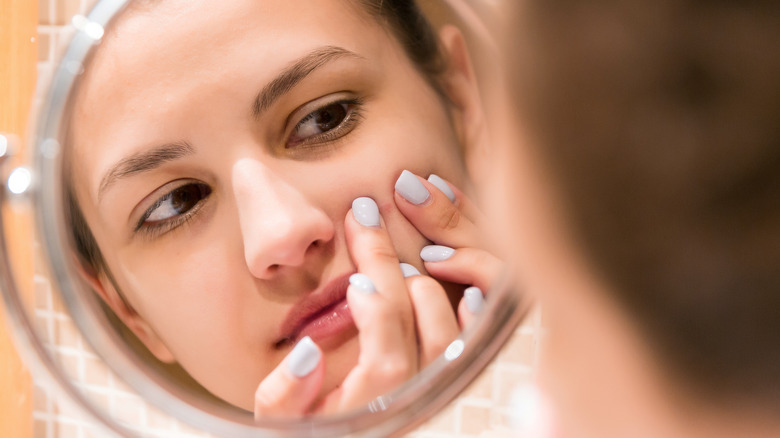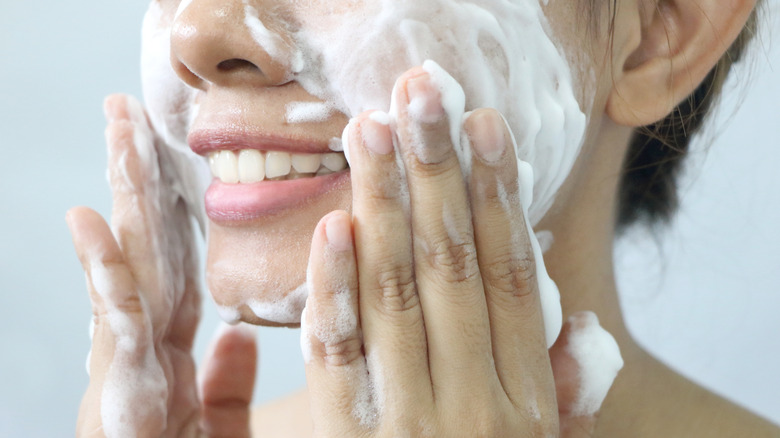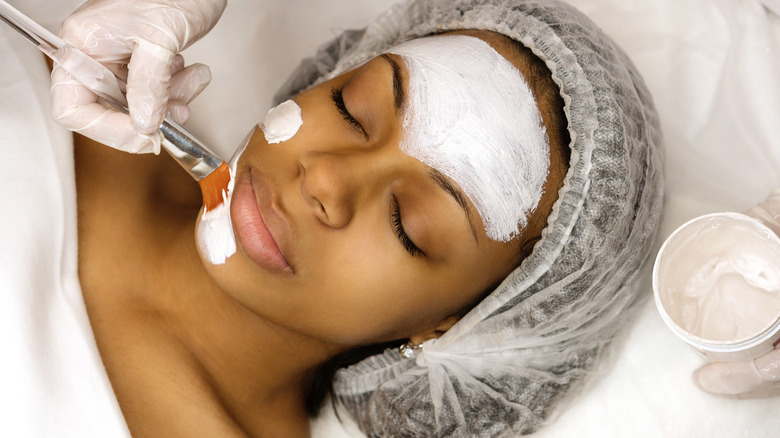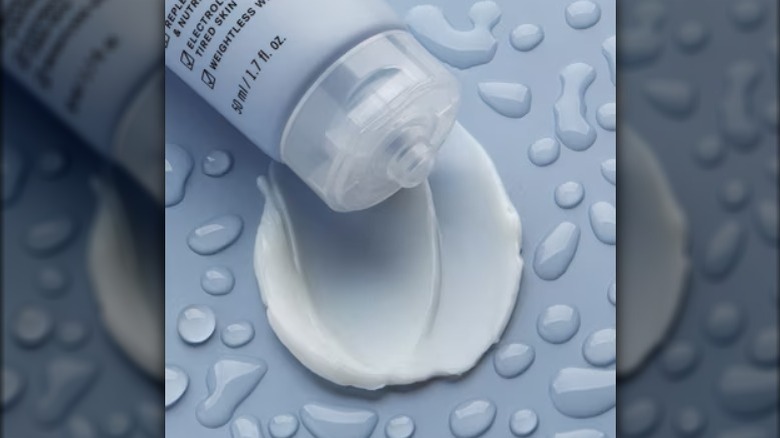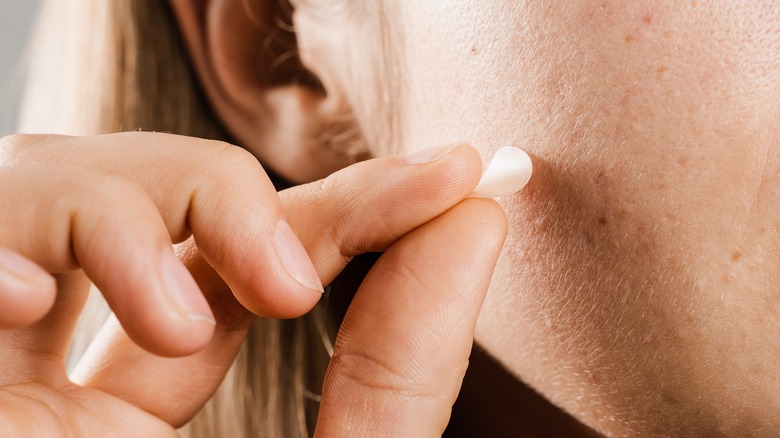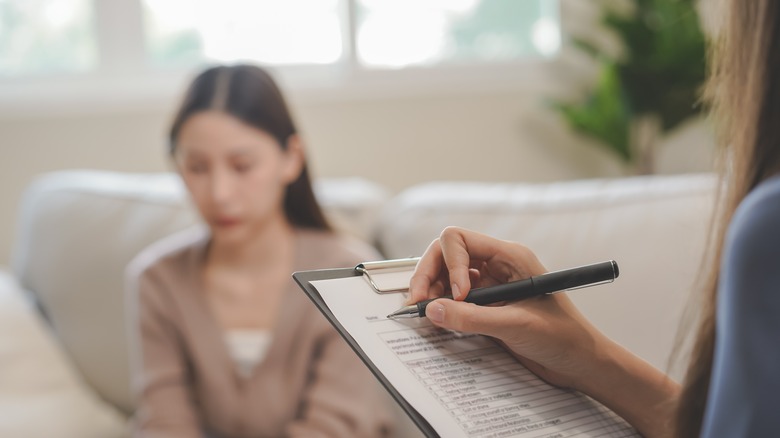Recovering From A Skin-Picking Habit Is Possible. Here's How
We may receive a commission on purchases made from links.
Skin picking, we've all been there. Whether from stress or for fun, we know we shouldn't be popping or picking anything on our skin. However, sometimes the act happens subconsciously. Stress can consume your thoughts, so you don't realize you're doing something until the tension has subsided. We've trailed our face, arms, or legs to try and eliminate any bump, only to make it worse.
When you pick your skin, you might've noticed that a tiny bump turns into a bigger, irritated one accompanied by other surrounding abscesses. They become inflamed, taking days to heal when they only needed a couple of days without being bothered to go away on their own. If you tend to pick your skin even after the bumps have become scabs, you could be left with scars that take much longer to heal.
Excessively picking your skin can lead to excoriation, a skin-picking disorder that can harm a person's mental and physical health. It's often related to OCD and OC-spectrum disorders, such as body dysmorphia or tic disorders. According to the International OCD Foundation, skin picking is similar to OCD because repetitive behaviors are occurring that some folks can't contain the urge to stop. Without the proper help, continuous skin picking can lead to severe pain after the act through sores, bleeding, or infections. Whether you have a habit of picking your skin or have excoriation, here are some ways to recover from skin picking.
Keep the skin clean from bacteria
Before trying to eliminate the skin-picking habit, take care of your skin after the damage. Use a gentle cleanser, such as CeraVe or Cetaphil, to cleanse your skin and prevent bacteria from spreading, causing infections to the open wound. In addition, gentle cleansers are great for all skin types, and they help protect your skin's barrier and give it the proper levels of hydration. It's important to note that you should wash your hands before washing your face to prevent transferring bacteria. Finally, allow your face to dry completely before applying the rest of your skincare products.
When healing, limited skincare product use is vital so you don't overwhelm the inflamed skin. Once your face is fresh and clean, use a hydrating toner to remove any extra bacteria or dirt. Avoid using exfoliators on your skin, especially scrubs, because they can cause more damage to your skin's barrier. Instead, opt for a toner that balances your skin's pH levels. For example, low concentrations of salicylic acid and benzoyl peroxide are safe for pimples that have been picked to reduce bacteria, calm inflammation, and minimize the spot.
Apply hydrating masks or serums
Keep the hydration going with face masks twice a week. You can DIY a face mask with ingredients you already have, such as avocados for an avocado mask, or buy a couple from Target. For example, Avatara's Drink Up face mask contains glycerin which is amazing for hydrating the skin. You can use your favorite hydrating mask as long as it's fragrance-free; you don't want to irritate the skin. If you have a face mask containing hyaluronic acid, squalane, and glycerin, you'll get the utmost hydration and protection for your skin's barrier.
Face masks are recommended to be used once or twice a week. For an extra boost of hydration, serums are ideal for daily use. You can try the slugging method that's gone viral on TikTok, applying a thick serum that locks in moisture. Many skincare gurus enjoy COSRX Snail Mucin because it helps soothe and repair damaged skin. A more affordable option is using Vaseline or Aquaphor since they're known to improve dry, cracked, and broken skin. They're perfect for acne-prone skin, thus clearing your spots and leaving you with nothing to pick from. Although the healing process will take time, patience is required.
Use a hydrating moisturizer and healing ointment
Applying a soothing and hydrating moisturizer can help keep the products you've used locked into your skin throughout the day and night. You want to use moisturizers with the glycerin ingredient since it's a humectant; it pulls water into the surface layer of the skin from the air and deep skin tissues. For example, Paula's Choice Water-Infusing Electrolyte Moisturizer is lightweight, extremely hydrating, and contains glycerin and ceramides to help repair your skin. Kiehl's Ultra Facial Cream is another excellent glycerin moisturizer that includes squalane to help improve the skin's barrier while preventing moisture loss.
If you don't notice any improvement using your cleanser, toner, mask, serum, or moisturizer, a healing ointment can support the healing process. Healing ointments are ideal for calming and moisturizing the skin, especially after it has been picked. For example, CeraVe's healing ointment has hyaluronic acid and ceramides that retains the skin's natural moisture. Another great ointment is La Roche Posay's Cicaplast Baum B5, filled with glycerin. It targets irritated areas on your skin, so after stress-picking, the ointment will help soothe and calm the wounds.
Creating a new habit of following your skincare routine and taking care of your skin after you've picked it can help improve your overall complexion. You'll notice your skin starting to clear and heal and hardly get any new breakouts, so you won't get the urge to pick on your healthy skin.
Make it difficult to pick
The steps and products we've mentioned can help keep your wounds from becoming infected and into sores, but they can only go so far if you don't leave your skin alone. Skin picking is a mental habit as much as it is physical. You have to think hard about not touching your skin when you're on your healing journey. In addition, you have to be more aware of when you pick your skin so that you can stop yourself ahead of time. You won't stop picking overnight, but making it difficult can help you overcome your habit.
Small changes in your environment can prevent you from picking; a strategy called stimulus control, like keeping your nails short or wearing gloves that will prevent you from coming in contact with your skin. The physical barrier with gloves will make picking more challenging. Another way to contain the urge is placing a pimple patch over the spot to create a barrier between you and the bump; patches help minimize the spot over time. On the other hand, you can always keep yourself busy with sensory rings, stress balls, or flippy chain fidgets. You won't have free hands to touch your skin by always having something in your hands.
Seek therapy
Overcoming a habit alone can be challenging, especially if it becomes a disorder. However, if you've tried everything to break the habit but haven't seen any results, seeking therapy can help in different ways. For example, we mentioned how stimulus control through stress toys could help distract your hands from skin picking.
If you decide to go to therapy, you can engage in Cognitive Behavioral Therapy (CBT), allowing you to change your tactics around skin picking. According to The Manhattan for Cognitive Behavioral Therapy, when you start CBT, you'll learn about the disorder and monitor your behavior throughout the process. Usually, tracking your behavior will allow you to write down the times you picked your skin. From there, you can make physical changes to get you out of your habit. The ultimate goal is to create healthier habits that replace skin picking. Finally, you'll try new techniques and speak with your therapist about what worked for you and what didn't work to continue the next steps.
Since skin picking can emanate from other OC-spectrum disorders, it can also stem from anxiety and stress. As a result, you might need to work through multiple things in therapy to get your skin picking under control. The positive thing is you can treat it, but it'll take some time.
